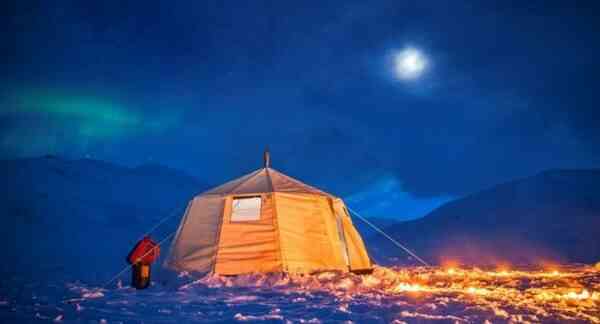Due to the tilt of our planet’s axis, polar night and day are inevitable in polar regions. The closer to the North or South Pole, the longer they are, and not everyone can adapt to such a length of daylight hours. Although plants, for example, adapt quite well, at least some. Yes, and the locals have long been accustomed to, and do not pay much attention to the polar nights.
Interesting facts about the polar night and day
- The world’s largest circumpolar city, which regularly visits polar night is Murmansk.
- The largest pumpkins in the world are grown in greenhouses in Alaska. During a long polar day, they sometimes grow up to 500-700 kg, and in rare cases exceed a ton (interesting facts about a pumpkin).
- Due to the peculiarities of the Earth’s orbit in the south, polar days and nights last longer than in the north.
- The longest polar day lasts 190 days at the North Pole and 184 at the South.
- During the equinoxes, due to refraction, it visually seems that the Sun shines simultaneously at both poles, which, for obvious reasons, is impossible.
- Officially, night and day are considered polar when they last more than 24 hours.
- The shortest polar night, lasting about 2 days, is observed at the latitude of the Arctic Circle. And the longest, lasting almost half a year, is at the South Pole (interesting facts about the South Pole).
- The ancient Greeks were unaware of the polar nights and days, but their astronomer Bion predicted their existence 2500 years ago.
- Where people live, most of the polar night is not completely dark. Part of the day is more like twilight than solid darkness.
- During the polar day, it seems as if the sun circles above the horizon without dropping below it.
- In Siberia and Norway, the northern lights are more often it is most observed during the polar night (interesting facts about the northern lights).
- Some northern animals hibernate during the polar night, and plants go into a state close to suspended animation.
- Even for local residents accustomed to the polar day and night, such a light cycle is by no means useful. It often causes increased stress and sleep disturbances.
- During the long polar night, the production of serotonin, which is also called the «hormone of joy», decreases in the human body, so some people experience depression.
- Some scientists believe that living in such conditions, with a long polar night and day, for 15-20 years can lead to the development of a number of chronic diseases.
